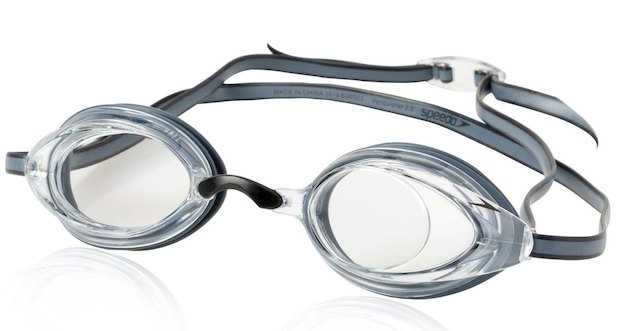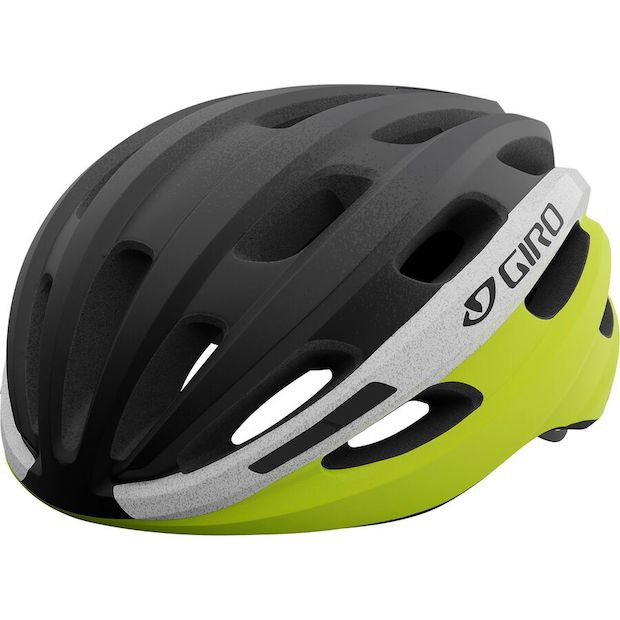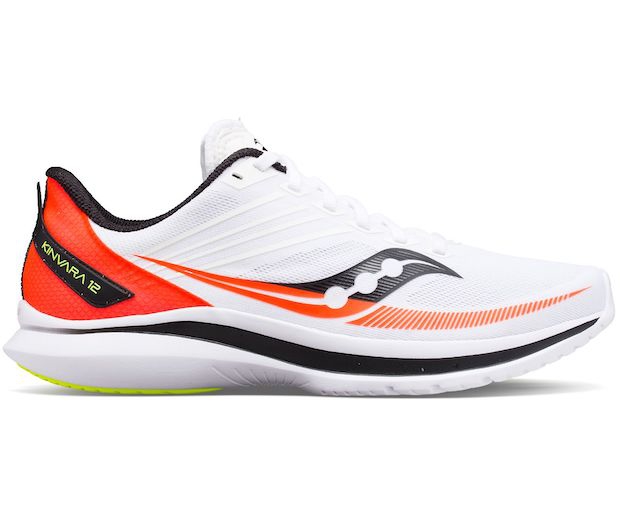Introducing the Budget Challenge Series
We know that there are many barriers to entering triathlon. There's temporal barriers, socioeconomic barriers, physical limitations (hello, learning to swim), and more. It's why triathlon skews heavily towards the white male athlete in the 35 to 54 age bracket.
So we're here to try and break down one of those barriers: cost. As an industry, we tend to focus on the latest and greatest — particularly on the bike, but for swim and run gear as well. We have a perception issue on distance being a measure for success. How many times have you heard from athletes who've been racing for a while that "I'm only doing a half Ironman this year"? Or from non-racers asking "have you done that race in Hawaii?"
In this series, we'll be looking for the deals: underrated events that you should target that have great price points, as well as new or used equipment that is worthy for a few years of use and can grow with you if you're deciding to hang out in the sport for a while. With this installment, I wanted to focus on a distance that I think is the most difficult to execute properly in triathlon for the established athlete, and also tends to be a gateway into the sport for those coming to triathlon with an athletic background: the Olympic distance triathlon.
I also wanted to focus on an all-in budget of $3,000. Why this number? Because that's what our industry has decided would be the number you'll spend for an "entry-level" new triathlon bike. So if we can spend our pennies wisely, we should be able to get everything we need *and* a race entry for that number. Let's get cracking.
The Gear Needed
–Race Entry
–Swim Goggles
–Swim Suit (for practice)
–Tri Suit
–Helmet
–Sunglasses
–Bike
–Socks
–Bike Shoes and Pedals
–Race Number Belt
–Run Shoes

Race Entry: Cranberry Triathlon Festival
New England is somewhat spoiled with a few long-standing independent events — just to name a few, you have the Pumpkinman Triathlon Festival, the Pat Griskus Olympic and Sprint Triathlons, Lobsterman and the Boston Triathlon by the ethos team, and Rev3 being back in New England. However, the one New England race producer that does a better job at welcoming newcomers to the sport than anybody is Mark Walter and the team at Sun Multisport Events.
His race at Cranberry has everything you could ask for for a beginner: a swim in a warm, protected lake (which also helps the budget, because you very much do not need a wetsuit for this race); a non-technical bike course; a mildly rolling run; and a massive post-race celebration in non-COVID times. There’s a good reason why athletes with dozens of races under their belt carve our space on their race calendar to race Cranberry. It’s just that good of a race. And at $129 for your registration, it’s a deal in a market where prices can often be in the $150 to $200 range.

Swim Goggles: Speedo Vanquisher 2.0
I’m a big fan of nothing new on race day. That means for swim races, training, and for triathlons, I like to have the same goggle on. I also am a firm believer that if you’re going to improve in a triathlon swim, you need to think a little bit like a swimmer. To that end, I really like the Vanquisher 2.0. You can get it in hundreds of different colors or google tints, and it is slightly more forgiving on the face than a pair of Swedes. At $18.99, they also don’t break the bank like a lot of the “open water specific” or polarized sets do.
Swim Suit: Dolfin Grab Bag Jammer
We’ve all seen the triathlete at the pool who is wearing their tri kit or shorts to the pool. Obviously don’t assume that they don’t know better; after all, someone might be testing their kit out to see if it works during the swim. But, if after striking up a conversation, you discover they are new to the sport and are only swimming in their tri kits, do them a favor: send them to SwimOutlet, pick and of the grab bags, and go. All of my training suits come out of the Grab Bags. I find Dolfin to be the most comfortable for newer athletes, as their waist sizing is slightly more traditional as opposed to the “swim four sizes smaller than your pants sizing” that you might go for a competition suit. And, again, it’s inexpensive comparatively at $13.95 to $22.
Tri Suit: De Soto Mobius Tri Suit
When I first got into triathlon, I remember thinking that one-piece tri suits were a terrible idea. And it wasn’t until I’d been in the sport for a couple of years before I got my first pair of bib shorts, and it was a complete revelation — if it’s comfortable for a pair of cycling shorts, why wouldn’t it be comfortable for my triathlon kit, too? I’ve almost exclusively raced in a one-piece suit since. De Soto’s Mobius gets the nod here for having a decent fleece pad, compression where you want it, and comfortable sizing for a variety of athletes. At $130, it also costs what you can often wind up spending just for a pair of shorts these days.

Helmet: Giro Isode MIPS
Head protection is critical. Obviously, you aren’t allowed to race without a helmet. But considering that you’re going to be doing a fair amount of training out on the roads (as, for this exercise, we’re not buying a trainer nor a subscription to Zwift), let’s do one better. Although the jury remains out as to whether or not MIPS provides value at preventing concussions and other traumatic brain injuries, we’ll err on the side of caution and go for a helmet with it. The Isode offers MIPS, good ventilation, and a relatively lightweight, all in a sub-$60 package.
Sunglasses: Goodr BFGS
$35 for polarized sunglasses? Sign me up. Goodr’s exploded onto the inexpensive sunglasses scene 6 years ago, and continues to innovate their product line. For those of us with massive heads -or- for those folks who simply like a larger glasses style, the BFGS offer classic Goodr looks and an improved fit. Having worn Goodr’s to my 70.3 PR, they’re fine for most triathlon courses; they’re good to block the wind and keep up to about 40 MPH.

Bike: Scott Plasma 20
Now, I know what you’re thinking: “It’s your first triathlon. Why are you buying a triathlon bike?”
Here’s the assumption I made in the course of writing this article: that you’re committed to trying triathlon for more than just one event, but you want to do it on a budget. And if that’s the case, you’re going to want the best tool for the job that you can afford.
I have always been more comfortable in some type of aero position on board a bike than anywhere else. Even on my drop-bar bikes, I’ll still gravitate towards putting the forearms on the bars (unless I am in a pace line, I don’t have a death wish). This is more true now, as my thoracic vertebrae aren’t shaped properly anymore thanks to three fractures seven years ago. Aero it is.
In my mind, then, if you’re looking to enter the sport on a budget and you want a triathlon bike, you go for a used bike. And if you want a used bike that has been treated well, you have two options: either the Slowtwitch Forums, or you go to The Pro’s Closet. And if you’re truly new to the sport, you should probably go with The Pro’s Closet.
When I undertook this assignment, there were almost 200 different triathlon bikes to choose from, all ranging from $1,200 up to $8,500. Any budget can be met. Additionally, all bikes undergo a thorough inspection and are rated off of the condition of the drivetrain, frame and more. There’s a 30-day return window. There’s even pricing guaranteed on certain bikes for what the trade-in value will be a year after purchase, in case you decide you want to upgrade again. It makes a used purchase truly hassle-free.
Obviously, there are some drawbacks: it’s tough to get fit for a used bike purchase. I know my fit numbers, but that’s only through years of experience. You may need to build in pricing to get a fitting before you go through this route. (If that’s the case, I recommend Dave Luscan, who offers virtual fittings.) But assuming you know what you’re looking for, this is a great option.
With that in mind, I went hunting for a narrow-tall bike; my limiter is always reach. The Scott Plasma has always been a favorite bike of mine, whether in top-line spec or in the more pedestrian versions. This one came with a Profile Design cockpit and a reliable Shimano drivetrain with Ultegra cranks and 105 derailleurs. Yes, folks. 105. It’s more than enough. And at $1800, an absolute bargain for a great bike. In fact, it was such a deal I wound up keeping the bike after the review, trading in a bike to keep the Plasma.
Socks: Swiftwick Aspire
Simple. Thin. Made in America. $15. What more could you want?
Bike Shoes and Pedals: Shimano SH-IC1 Shoes and RS500 Pedals
One of the things I hear from new athletes all of the time is the shock that pedals aren’t included with their new bike purchase. To be honest, I was one of those people; when I bought my first “real” bike in 2011, I was amazed I needed to spend a bunch more money on pedals.
Little did I know that the shop only carried Ultegra and Dura-Ace pedals, and I could have opted for something far less expensive than that. The RS500 gives you the same SPD-SL set-up at a much friendlier pricepoint. As for shoes, I also went for Shimano — the IC1 is technically an indoor cycling shoe, but the mesh upper and single-strap will also work for triathlon. That mesh upper should also make it more accommodating to wider feet, something that can be a challenge at lower pricepoints.
Combined, you’re looking at $165 for both the shoes and the pedals.
Race Number Belt: Orca Race Belt
Some may argue the necessity of this. I am of the mindset that if you’re spending more than $40 on any article of clothing, you shouldn’t be safety pinning a bib through it. Not when you can spend all of $10 on one of these and save your stuff.

Run Shoes: Saucony Kinvara 12
Last but not least, we’re going with a non-super shoe that feels great for both everyday running and still feels light and responsive when you decide to race in it. The Kinvara kickstarted a revolution in 2008, bringing us from minimalism to a cushioned but low offset running experience. Many brands can trace their existence today to what the Kinvara helped bring to the table. The current iteration may not be the darling of races anymore (that’s what the Endorphin line-up is for) but it’s still a great option that is nearly $100 less than the current generation of carbon-plated footwear.
Total Spend: $2,477
The above total includes some mild rounding up of prices to the nearest dollar. But that still leaves us with over $500 remaining in your budget. It means you could try a race, discover you love it, and decide that maybe you do want a wetsuit. Or maybe you want to just race a bunch more and enter a few more events. Or get a coach for a couple of months, or…
The choice is yours.


Start the discussion at slowtwitch.northend.network